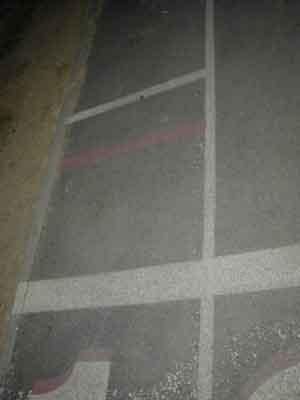

 |
 |
|
This photo from the imperial track at Los Gatos High
School shows the orange (should be green) 800m start line behind the white
400m start line in lane 2, but it is also the orange waterfall line in
front of the white 400m start line in lane 1. If you look carefully, you
will see three sets of blue triangles (the closest ones staggered in lanes)
for the cascading 4x400 relay zones that you will need to properly conduct
the race on an imperial track..
|
This is Rio Mesa High School where they just plain did it wrong. The track is not metric or imperial but somewhere in between. The red line is the 400m start (that should be white), the thin white line is the 800m start (that should be green) and the spacing between the two lines, no matter what the length of the track, should be exactly a 2 to 1 ratio to the finish line (the thick white line)--which it obviously is not., |

 |
 |
| Claremont's new track uses arrows for the reverse direction and a straight line for the normal direction. | Of course they also use black lines where red are called for. The last 300H marks (at the wide points of the 4x400 triangles) and the 4x200 acceleration marks in lane 2 should be red. I have no idea why they have the dark area before the relay triangles. Photos from Rich Ede |